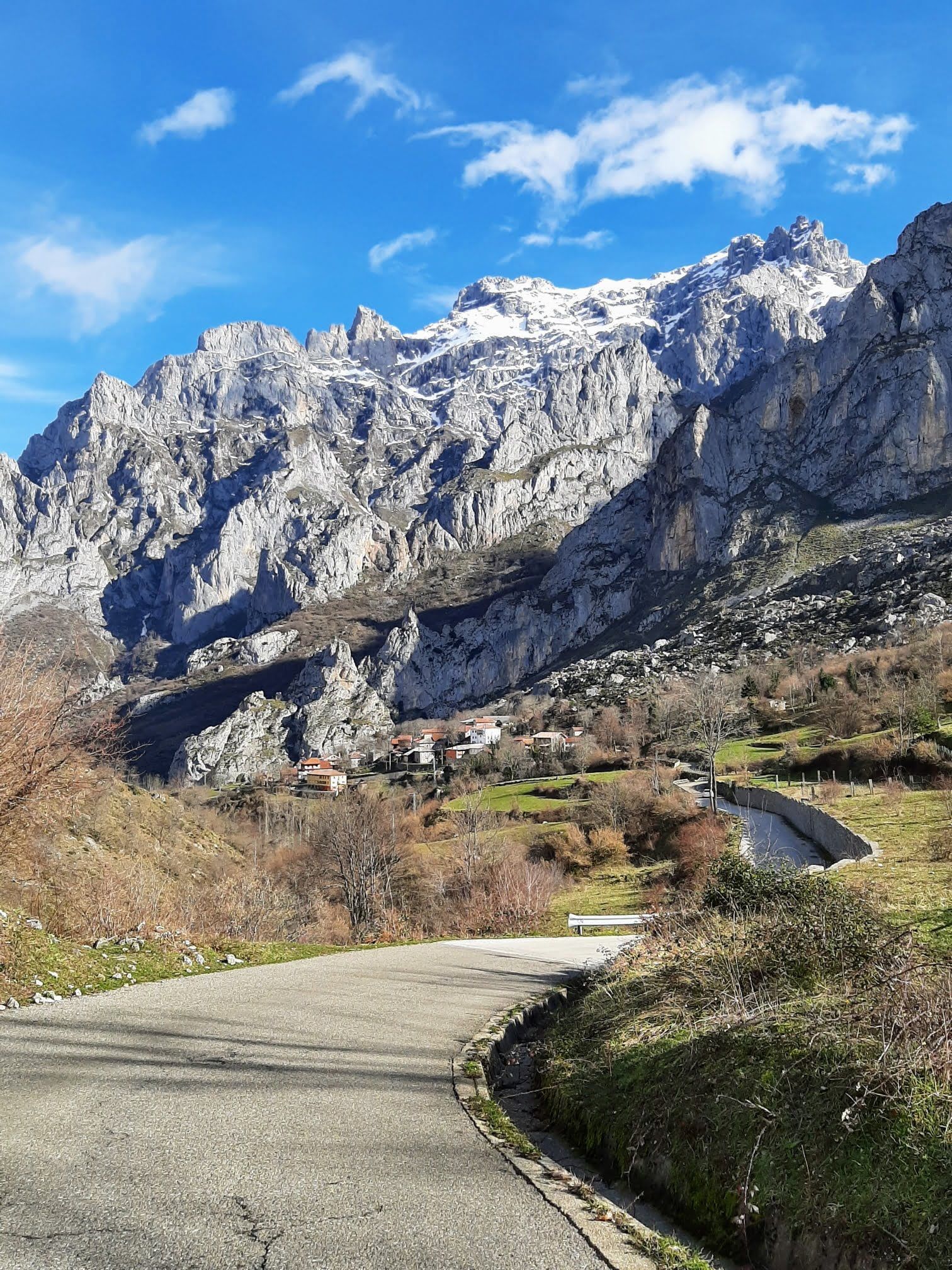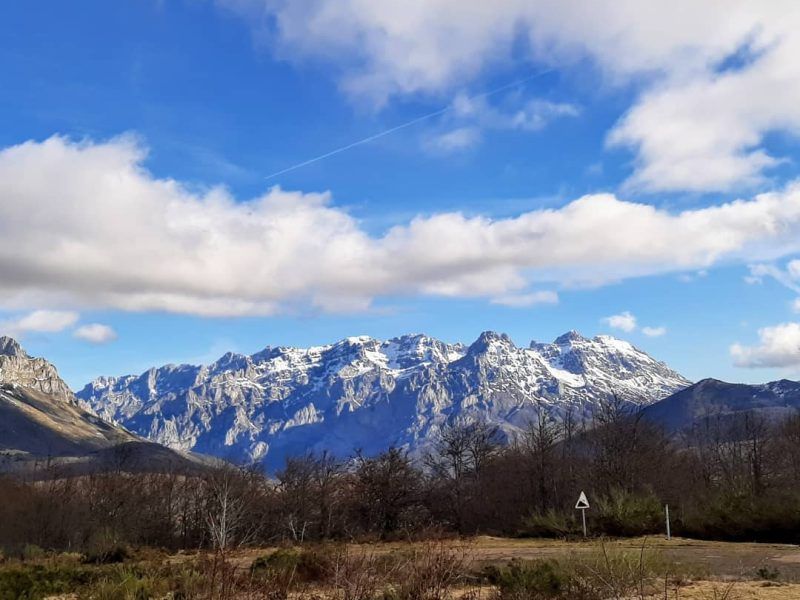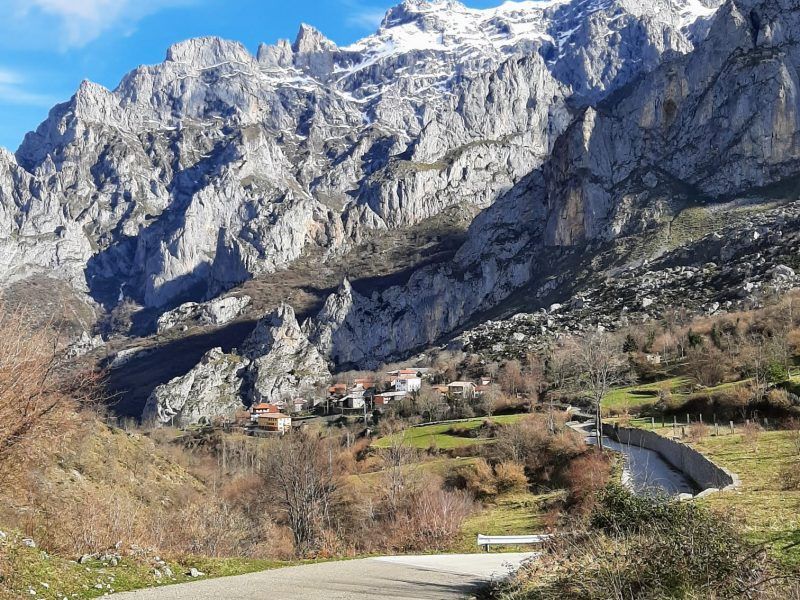Less than 30 kilometers from the Atlantic Ocean in northern Spain, on the border between the provinces of Asturias and León, you’ll find the Picos de Europa National Park. Sailors approaching the Spanish coast from the north once described this view as their first glimpse of Europe. The sight of these dramatic peaks marked their arrival at the continent’s edge.
The First National Park of Spain
That’s how the name Picos de Europa came to be. The Picos de Europa are part of the Cantabrian Mountains, which stretch along Spain’s northern coast. The Picos may not cover a vast area roughly 40 kilometers long and 20 kilometers wide, but their rugged beauty more than makes up for their size. Established in Asturias in 1918, Picos de Europa was the first national park in Spain and is today the second largest of the country’s 15 national parks. The highest point is Torre de Cerredo, rising 2,650 meters above sea level in the central massif. Yet the Picu Uriellu (2,519 m, also known as Naranjo de Bulnes) often steals the spotlight with its striking conical shape.
Picos de Europa National Park
They are called “Europe’s Peaks,” even though they don’t reach the heights of the Pyrenees, the Alps, or Spain’s Sierra Nevada. Picos de Europa National Park is a beloved retreat for residents of nearby cities and for those seeking to escape the southern summer heat. However, it is often overlooked by visitors who aren’t specifically planning a hiking holiday.
Meanwhile, Spain’s eastern and southern coasts attract many travelers looking for a relaxed beach vacation, as do the Balearic and Canary Islands. But you certainly don’t need to be a mountaineer to enjoy the Picos de Europa. The park and its surroundings offer something for everyone.
Village Charm in Potes
Our journey begins in Potes, just east of the park itself, where the Quiviesa and Deva rivers meet. Potes is a rustic little town full of charm, known for the many artists who try to capture its authenticity on canvas. The old town was destroyed during the Spanish Civil War in the 1930s but was later rebuilt, so today there are few visible traces of that devastation.
Everything feels calm and idyllic beneath the faded wine-red umbrellas of Café El Trenti, where tables line the street and overlook the stone bridge Puente de San Cayetano. Only about 1,500 people live in Potes, but during the high season, tourists multiply its population.
Among the Clouds at Fuente Dé
From Potes, you already have a breathtaking view of the mountains. The road to one of the highlights of Picos de Europa National Park leads to the Fuente Dé cable car. During the high season, it’s best to arrive early in the morning to avoid long queues for the short ride up to the mountain station and its restaurant. In just four minutes, you’ll be at the top, high among the clouds, surrounded by stunning scenery. From here, you can explore the rocky landscape, set out on beautiful hikes, or capture the panoramic views with your camera.
On our route through Picos de Europa National Park, on the way to our accommodation in Posada de Valdeón, you’ll cross two mountain passes: Puerto San Glorio (1,609 meters) and Puerto Pandetrave (1,569 meters). Both are well worth a stop, offering sweeping views over the national park that will take your breath away.
Ruta del Cares
From Posada de Valdeón, it’s only a short distance to another highlight of Picos de Europa National Park: the Ruta del Cares. If you’re looking for a beautiful hike in Picos de Europa, the Ruta del Cares is an absolute must. It’s the most popular trail in the park, attracting around 300,000 hikers every year. This famous route is known for its breathtaking views and its narrow path carved into the cliffs of a deep gorge. With the rock wall on one side and the abyss on the other, the trail is only one to three meters wide.
That’s enough room to pass, but do take care! As we walk along the Ruta del Cares, we enjoy the incredible scenery of Picos de Europa. Looking up, we see the majestic peaks; looking down, we watch the Cares River rushing below. From the village of Caín, we enter one of the most spectacular sections of the trail.
The river flows wildly, and several times we cross it via tunnels and bridges built into the rock. We walk along the limestone walls where water seeps down, enjoying the dramatic landscapes, bridges, and limestone caves, and even spotting a few friendly goats along the way. If you’d like to learn more about the Ruta del Cares, read our blog about this hiking route.
On the Water
Water and mountain views in Picos de Europa? Absolutely! You’ll find them at the lake in Riaño. It takes a small detour, but it’s worth every minute. The road descends to Riaño, where a large reservoir has existed since the 1980s. Seven villages were demolished, their remains now resting at the bottom of the lake. Many people had to leave the homes their families had lived in for centuries – it must have been a great tragedy.
Today, there is a new Riaño, and two old churches were saved, carefully dismantled stone by stone and rebuilt here. The reservoir lies between the town and Picos de Europa National Park, offering a spectacular view of the mountain range’s vastness.
At Altitude
On the way to our mountain refugio in Picos de Europa National Park, we cross rugged lunar landscapes of limestone, home to chamois, goats, and alpine choughs. There are also silent forests where bears and wolves still live, and idyllic summer meadows filled with colorful alpine flowers. Picos de Europa is Spain’s oldest national park. The local communities cherish it deeply, as many still live from livestock farming and traditional cheese production.
Here, they make delicious smoked goat cheeses and strong blue varieties matured in natural caves. You’ll undoubtedly taste them in the charming village guesthouses, where a glass of wine and a hearty regional meal await you at the end of each day. But for tonight, we retreat to a mountain refugio in the heart of Picos de Europa, already looking forward to tomorrow’s beautiful sun
Naranjo de Bulnes
The highlight of this journey is the Naranjo de Bulnes. On the northern side of the central massif lies the hamlet of Bulnes, at the foot of the most iconic peak in the Picos de Europa, the Pico Urriellu, better known as the Naranjo de Bulnes (2,519 m). This monolith towers hundreds of meters above its surroundings. There’s an easy way to reach Bulnes: the funicular railway, which takes you to the village in just seven minutes.
The funicular opened in 2001 after heated debate among Bulnes’s twenty-five residents, the government, and environmental groups. The residents wanted a road, the environmentalists wanted nothing built at all, and the government chose the funicular as a compromise. It wasn’t exactly what the locals had hoped for, but it’s certainly more practical to transport someone who’s seriously ill by train than to carry them down on a stretcher.
The Cliffs of Llanes
Time to leave Picos de Europa National Park behind and head for the rugged northern coast of Spain, which lies just nearby. We settle in Llanes, a charming town that serves as a perfect base for visiting the most beautiful beaches in northern Spain. The sea along this coast can be quite wild at times, but that’s what makes it so photogenic. Many of the small beaches are sheltered by rock formations or tucked away in quiet coves. It’s a wonderful ending to a trip where we’ve experienced all the faces of Picos de Europa and northern Spain.
Landscape of the Picos de Europa
The Picos de Europa are made up of three mountain massifs: Andara (the eastern massif), Urrieles (central), and Cornión (western). The central massif is separated from the western one by the 1.5-kilometer-deep gorge of the Cares River, La Garganta Divina. The Picos are also known for their beautiful mountain lakes, the Lagos de Covadonga. Up to about 500 meters in altitude, the Picos are covered with elm, oak, chestnut, ash, and birch trees.
Up to 1,000–1,200 meters, you’ll find meadows (vegas). From 1,500 meters upward, you walk among rocks, rocks, and more rocks. Temperatures in Picos de Europa can vary greatly. You are in the mountains, after all, and the weather here can be unpredictable. Always check the forecast before you go.
Wildlife in the Picos de Europa
The alpine chough, buzzard, and griffon vulture are common in Picos de Europa National Park. Bears are rare, but wolves still roam remote areas. Many species are protected, including the bearded vulture and capercaillie. Predators large and small live here: martens, ferrets, oxen, wildcats, stoats, wolves, deer, and wild boar. You can also spot eagles, falcons, hawks, vultures, and owls.
The most characteristic animal of the Picos de Europa is the Pyrenean chamois (rebeco in Spanish), an athletic animal about 75 centimeters tall and one meter long. It has two pointed horns and a brown coat with a dark stripe along its back.
Will You Join Us?
Discover the unique villages, stunning landscapes, and mountain peaks of Picos de Europa National Park on the 6-day Picos de Europa hiking trip. Over five stages, you’ll walk from Fuente Dé to Llanes, covering parts of the route on foot and others by car.
Or are you an avid walker with the Camino de Santiago on your bucket list? You’re in the right place with WAW.travel. We’re happy to help you take the next step!






Comment (0)